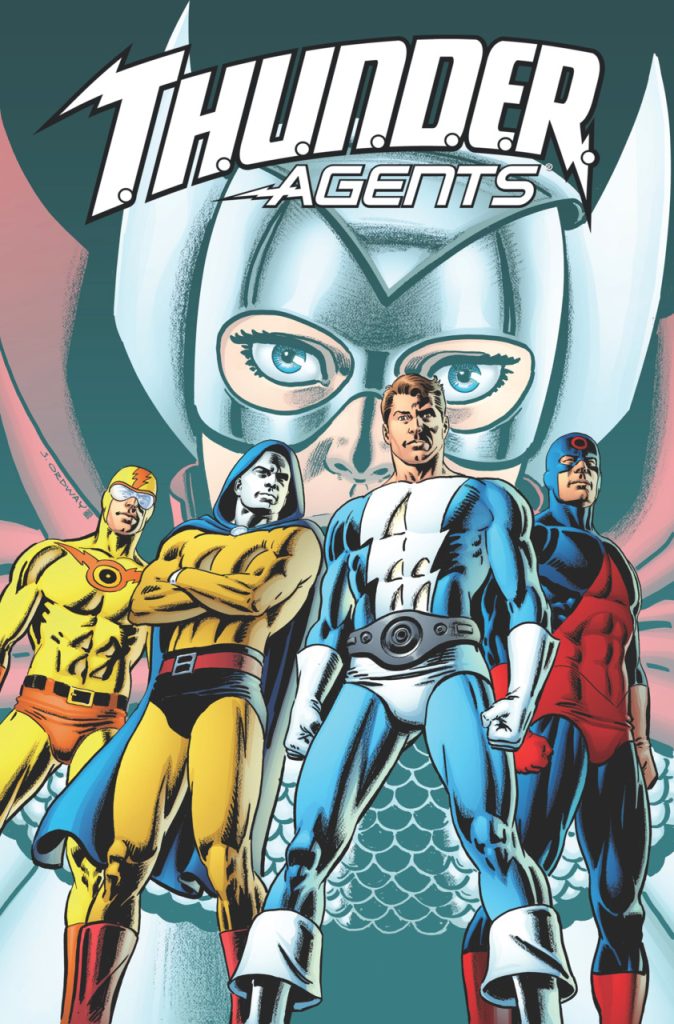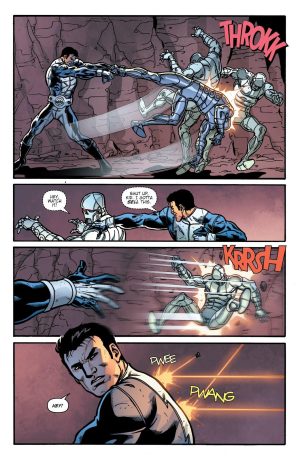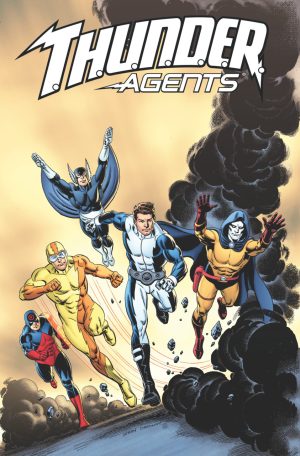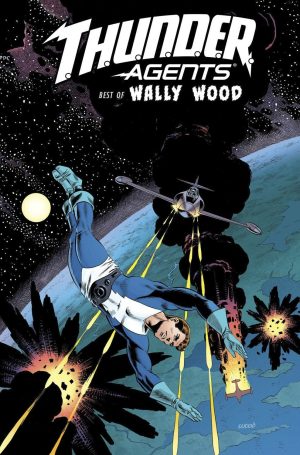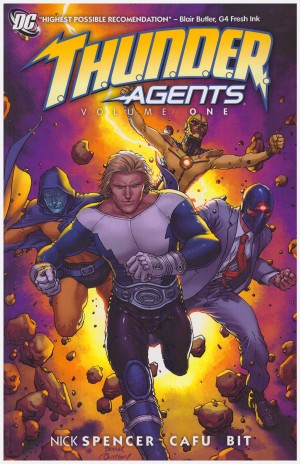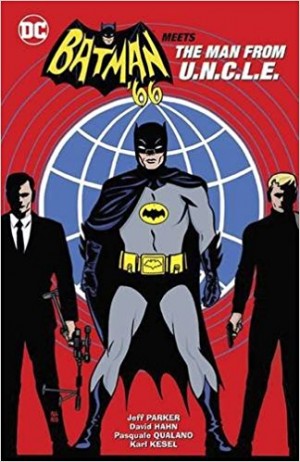Review by Frank Plowright
IDW’s version of T.H.U.N.D.E.R. Agents appeared relatively rapidly after DC’s attempt. How that went for DC is surmised from them publishing two series, yet only one being issued as a graphic novel.
Rather than continuing from previous iterations Phil Hester opts for a complete reboot. As events begin T.H.U.N.D.E.R. exists as an organisation, but staffed with highly trained human agents alongside Noman, able to switch his intelligence between assorted android bodies, and the super fast Lightning. T.H.U.N.D.E.R. has prototype devices bestowing super powers, but not the person who created them, nor the capacity to reverse-engineer them. One is a belt providing the wearer with super strength, but the optimum choice for using it is Len Brown, a washed-up former hockey player now earning a living as a gang enforcer. Also reintroduced is Iron Maiden, working for the mysterious Warlord.
Anyone who recalls the 1960s T.H.U.N.D.E.R. Agents will have a broad idea where things are headed, but Hester updates the premise so anyone can pick up T.H.U.N.D.E.R. Agents without a clue about the history. One effective modification is Noman’s personality inhabiting different types of artificial creations, but those who know the old Brown will be pleased his clumsy character remains essentially intact.
Andrea Di Vito is a reliable artist. Everything needed is there on the page, the action supplied and the story told, but not in a way that thrills. He’s limited by obviously being told to use the designs from the 1960s series, but that’s not the entire picture. Superhero action comics at their best have an added dynamism not on show here. An exception is when Di Vito zooms to the other end of the scale for an Iron Maiden shown mid-Kirby cackle pose.
Most of this volume is set-up, introducing the concept, the major characters and the dangers. It’s all handled efficiently without ever stepping above and the big bad threat’s defeat may be unusual, but it’s also uninspired, coming across as one of those old Star Trek moments where the intentions are clear, but they induce a groan of disbelief. Hester is otherwise professional, and supplies a couple of new developments to take the series forward, and they’re picked up in Vol. 2.
